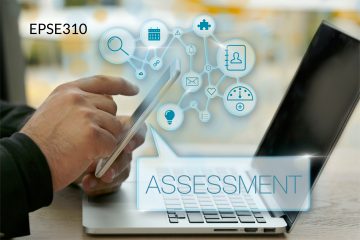In EPSE 310, Assessment and Learning in the Classroom, you are learning about the principles and practices for effective, inclusive high quality classroom assessment. You will also become familiar as you prepare for practicum and as you teach, with the BC Ministry document on Assessment and Reporting and MyEducationBC (a vast array of resources are available on the My Ed BC Teacher Resources website. As part of any study into current assessment practices, you will also want to explore the potential of integrating digital technologies, including student response systems and multi-modal creation/communication tools into your teaching. To help you get started thinking about this, please read on…
Secondary TCs Lecture slides (including some references and resources) Winter Term 2 2019: Dawydiak EPSE 310 Secondary posted
Elementary TCs in-class workshop slides Winter term 2 2019:
- EPSE 310_Feb 6 2019_Sec 113 In the Sustainability cohort, students were each challenged to bring to class an assessment tool or website idea. Students assessed a tool using the SAMR model (following some discussion about the importance of class context, students needs, teacher needs etc.). We also:
- tested out Plickers for all class response and prior learning assessment.
- used mentimeter for students to share ideas following a discussion prompt
- viewed an example of a ‘ShowMe’ for multimodal formative (or summative) assessment to support UDL (student representation of learning).
- Section 107 – EPSE 310 Elementary 19-01-30 In the ABC & Indigenous cohort session we:
- used a Single-Column-Rubric to peer-review and assess drafts of Assignment One in the course (development of an assessment tool)
- tested out Plickers for all class response.
- viewed an example of a ‘ShowMe’ for multimodal formative (or summative) assessment to support UDL (student representation of learning)
Educators and researchers have long considered the benefits of students actively engaging in the classroom and how this can lead to gains in student learning. One way to achieve such engagement is by effectively incorporating a student response systems (SRS) as a part of your classroom assessment approach. It is important to consider the benefits and the potential drawbacks of various systems available to you as a K-12 educator in order to select one that meets your (and your students’) needs. Be sure to keep in mind that the efficacy of any student response system depends on the quality of the questions and how you use the system. You will learn, as part of your course work, how to develop effective selection and supply questions. This work will be helpful in selecting an SRS and constructing your poll or quiz.
Some issues to consider when engaging your students with digital technologies and online learning:
- BYOD and Access – bring your own device – Are there policies in place in my school or rules in my classroom to consider? What about students who do not have access to a device? When pairing or grouping students and expecting one device in a group, do you know if the student who owns that device is willing to share it OR are there devices in my school I can borrow? What impact does it have on students when they do not have the same access as others?
- FIPPA – Freedom of Information and Privacy Protection act – Students data should not be shared on non-Canadian housed servers… Am I protecting students data privacy? Do I have necessary permissions or consent? Am I engaging my students in critical digital literacy discussion around privacy & safety in a broader sense?
During our sessions, we tried out (and looked at) different ways to incorporate ‘all class response’ (vs. hands up/volunteers). All class response, including the use of a digital student response system (SRS) can lead to greater student engagement. Read this article in Educause describing how the efficacy of assessments and increases in student learning are achieved when an SRS is coupled with socio-constructivist methods. The use of these systems along with student discussion, peer teaching and pair share can also lead to greater student satisfaction.
The notion that engaging the ‘backchannel’ during lectures and classes can add a more active component to what are sometimes more passive forms of teaching is taking hold with the growth in BYOD (bring your own device) in secondary and post-secondary classrooms. Chapter 4 of Leahy and Williams’, Embedding Formative Assessment, makes a case of ‘all student response’ and limiting teacher questions to only those that propel learning. This book is a valuable addition to any teacher’s library and clearly links theory with practical strategies and relevant advice.
The value of anonymous responses… We know that adolescent learners appreciate, or some would even say require, the opportunity to participate anonymously. Due to their sometimes heavy reliance on peer approval, students at this age can be reluctant to share their views orally. For this reason, employing an SRS can give voice to quieter learners and generate more honest responses. Of course, anonymity comes with drawbacks so be sure to consider the following:
- How are responses published, shared or viewed?
- Can I moderate responses?
- Can students change their responses?
- Can I archive or track student responses in some way?
- How will I respond if a student posts an inappropriate response?
- How can I create a class climate the promotes risk taking and accountability?
Student Response Systems: getting started with resources on the Scarfe Digital Sandbox
- Mentimeter – polling software that allows for various types of response and graphical representations (plot graphs, bar graph, word cloud, tiled short answer response)
- Plickers – all you need are free printable scan cards, a teacher account and one mobile device to record and track responses
- iClickers – a Mac and PC set are available on loan in the Education Library
- Poll Everywhere – students answer poll questions using browser, mobile app or text response
- Socrative – create a class account to track responses, students answer using browser or mobile app
- Answer Garden – instantly generates a word cloud of responses, no account needed
- Kahoot – gameify learning in your classroom with ‘Kahoots’
- Padlet – this multi-modal response digital wall is great for brainstorming, checks for understanding and formative assessment (and now includes ability to add audio and drawing in addition to text, hyperlinks, video, images)
Here’s a Student Response System Comparison Chart for an at a glance view of each of the above systems.
Download this handout for more info and some links to research about Student Response: Sandbox_iClicker_Mar2015 update
A couple of alternatives for student representation and expression:
- Showme and Explain Everything are in a class of apps called ‘digital whiteboards’ and are great for formative assessment and even for student projects and presentations allowing voice narration, video, images, drawing and typing. I can ask a student to ‘showme’ what they know by asking them to annotate an image, share a video of completing a problem etc. (Students can ‘annotate’ an image as they record their voice)
- Concept mapping is a powerful tool for illustrating complex links between ideas (be they images or text). Many softwares allow for hyperlinking and embedding images and video. Mindmup is a browser based application that allows co-creation of a concept map across time and space.
- ePortfolios provide rich opportunities for students to select, evaluate and share products of, and reflections on, their learning. Freshgrade is a Canadian housed/FIPPA compliant platform teachers can access for free. Several BC school districts (and beyond) have paid accounts so students can be ‘auto enrolled’. Parents can also be given access.
Visit the Scarfe Digital Sandbox Resource tab and click on ‘assessment‘ for more digital tech integration options for engaging and assessing your students.

